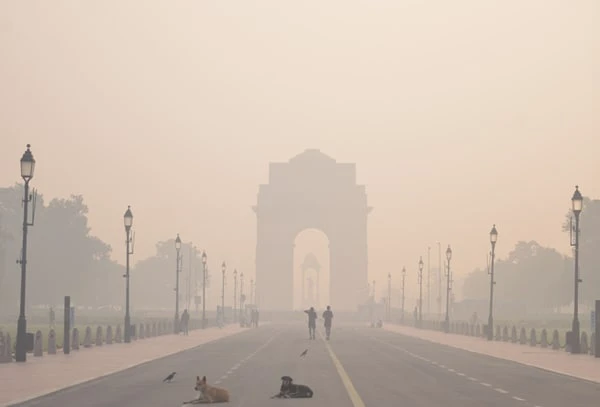Refusing a blanket ban on construction in Delhi and the National Capital Region despite ‘very poor’ AQI, the Supreme Court on Monday said that environmental concerns need to be balanced with development.
The Bench, led by Chief Justice Of India BR Gavai, said it is not inclined to issue “bold directions” to curb the rapidly rising pollution levels in Delhi, while maintaining that it does not comprise of experts.
The Bench also sought a plan from the Centre by November 19 that aims at tackling the air pollution crisis. Stressing the futility of temprary solutions, the top court said the Centre has to formulate long-term solutions to tackle the menace.
Centre Must Take The Lead: Top Court
The court reiterated that it cannot run Delhi’s pollution management year after year and that the primary responsibility lies with the Union government. The Bench noted that lakhs of families depend on construction and allied activity for livelihood, and a sweeping ban would have severe socio-economic consequences.
“We are no experts,” the CJI said, adding that environmental protections must be balanced with development.
The Court also reaffirmed the structured implementation of the Graded Response Action Plan (GRAP), which imposes restrictions progressively depending on the level of pollution.
Centre Questions Applicability Of International Standards
Appearing for the Union government, Additional Solicitor General (ASG) Aishwarya Bhati argued that pollution standards followed in developed countries cannot be imposed on developing economies like India. “When you compare a developed country with a developing country, the same measures cannot apply,” she said. She added that countries like the US have already completed industrialisation:
The ASG informed the Court that the Union Environment Minister had met with Delhi-NCR environment ministers on November 11, and another meeting would soon outline immediate measures.
Responding to the Court’s query on an all-out construction ban, the Centre said the issue is determining how much pollution can be curbed without affecting human rights.
Court Replies From Centre, CPCB, CAQM
The Supreme Court sought a detailed response from the Centre, the Central Pollution Control Board (CPCB), and the Commission for Air Quality Management (CAQM) after concerns were raised about allegedly outdated air quality monitoring systems in Delhi.
Amicus curiae Aparajita Singh informed the Court that many monitors max out at an AQI of 999, making them incapable of recording more severe pollution spikes. She also referred to reports and videos alleging that water was being sprinkled on air-monitoring stations to artificially deflate readings.
The Bench noted her submission that such equipment is “not suitable for Delhi,” and directed the Union government to place on record the type of devices used, their efficiency, and whether they meet global standards by November 19.
The ASG countered the allegations, stating that the equipment used in India is “one of the best in the world.”
California Standards Raised, Court Declines Year-Round Restrictions
Intervener Gopal Sankaranarayanan urged the Court to adopt stricter air quality benchmarks, similar to California, and recommended prohibiting GRAP-1 activities for the entire year. He also presented a comparative AQI chart showing that air considered “good” or “satisfactory” in India would fall into “poor” categories under California norms.
While noting concerns over India’s broader AQI categories, the Bench declined to adopt California-style stringent standards, reiterating its non-expert position.
Punjab, Haryana Reports Recorded
The Court took on record the latest submissions from Punjab and Haryana, states that continue to face challenges in curbing stubble burning, considered a significant seasonal contributor to Delhi’s smog.
